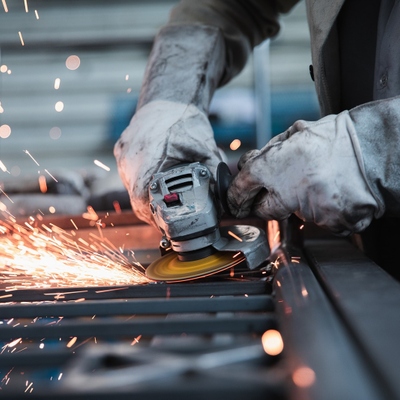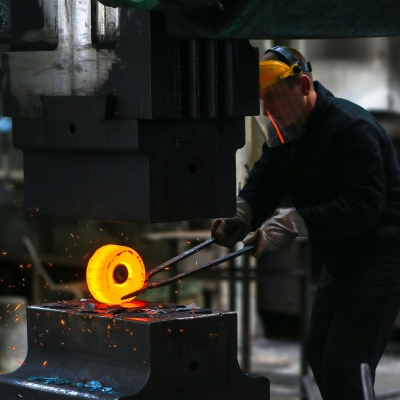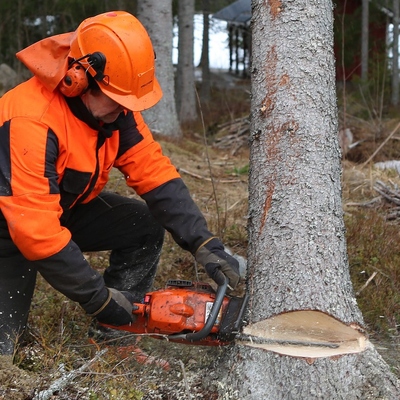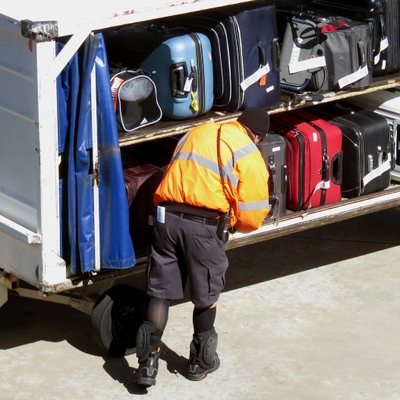What is Noise Induced Hearing Loss (NIHL)?
In our work environments we are exposed to a wide variety of sounds, some of which may be at an unsafe level and lead to Noise Induced Hearing Loss (NIHL). This can be very sudden loud sounds such as explosions, or loud noise over an extended period of time such as those given off by machinery, equipment or speakers.
Damage can occur as the result of sudden exposure, or be the result of a build-up of exposure. Hearing may be impaired, lost completely or a person may suffer from Tinnitus (ringing, whistling, buzzing or humming) in the ears. Damage can affect one or both ears and be temporary, or permanent and disabling.
In the UK, the HSE estimate over 1m workers are exposed to levels of noise that put their hearing at risk, with 17% suffering hearing loss, tinnitus or other related conditions as a result of exposure to excessive noise at work.
Key facts
Noise Induced Hearing Loss (NIHL) is the medical term for symptoms caused by damage to hearing that may occur as a result of exposure to excessive noise. Damage is cumulative, adding up over time, which is why some people may not be aware their hearing is changing until it's too late.
- Muffled hearing
- Temporary hearing loss
- Ringing, whistling, buzzing, humming noise in the ear (Tinnitus)
- Struggling to hear a normal conversation
- High volume on TV or radio
- Struggling to hear telephone conversation
- Cannot hear properly when back is turned away from the noise.
The effects of NIHL are far-reaching with the effects of hearing damage or tinnitus affecting home life as well as work life. Effects can include:
- Frustration at not being involved in the conversation
- Feelings of isolation
- Guilt and embarrassment at misunderstandings
- Sleep difficulties (Tinnitus)
- Focusing on constant symptoms can make people annoyed, depressed, anxious or angry.
- Untreated hearing loss has been linked to heart disease, diabetes, cognitive decline, dementia and depression.
Hearing damage is cumulative, the more exposure a person faces, the greater the damage to their hearing. Noise Induced Hearing Loss is permanent and disabling. Sometimes noise-induced Tinnitus goes away as the ears recover, but this is not always the case.
- Bakery, dairy and confectionary industries
- Milling, drink production & meat industry
- Building and maintenance of roads and railways
- Construction
- Estate Management & maintenance
- Forestry
- Foundries
- Heavy engineering
- Manufacturing concrete products
- Mines & quarries
- Motor vehicle manufacture & repair
- Public utilities
- Shipbuilding & repair
- Glass bottling lines
- Product impact on hoppers
- Wrapping, cutting wrap, bagging etc
- Bowl choppers
- Pneumatic noise and compressed air
- Milling operations
- Saws/cutting machinery
- Blast chillers/freezers
- Packaging machiners
- Wheeled trolleys/racks
- Punch press
- Chainsaw
- Power ower
- Welding
How can NIHL be managed or reduced?
Reactec offers a range of noise dosebadges that can be integrated with the Reactec eco system to ease record management and reporting of noise measurements and monitoring.
Learn how Reactec can helpEuropean workforce exposed to hazardous noise
UK workers with hearing impairment or deafness
UK workers exposed to hazardous noise levels
Useful Links
Legal noise monitoring obligations & regulations
The Control of Noise at Work Regulations 2005
Under these regulations it is an employers duty to eliminate or reduce risks to health and safety from noise at work.
Depending on the level of risk, you should:
- Take action to reduce the noise exposure; and also provide your employees with personal hearing protection.
Other duties under the Regulations include the need to:
- Make sure the legal limits on noise exposure are not exceeded;
- Maintain and ensure the use of equipment you provide to control noise risks;
- Provide your employees with information, instruction and training; and carry out health surveillance (monitor workers’ hearing ability).
The regulations apply where work activities expose people at work (your employees or other workers affected by your work activities) to risks to their health and safety from noise.
The UK Deafness Working party record the total number of claims settled every year and how much was paid on settlement. The statistics make for stark reading.
| Year 2016 | Year 2017 | |
| Total No. of Claims Settled: 76,231 | Total No. of Claims Settled: 56,424 | |
| Paid on Settlement: £109,419,171 | Paid on Settlement: £124,362,886 |
BC Legal's analysis of changes in the 15th edition of the Judicial College Guidelines for the Assessment of General Damages in Personal Injury Cases (JC Guidelines) to previous

How to assess noise exposure levels
You are required to make a reliable, representative estimate of your workers’ daily personal noise exposure. Daily personal noise exposure, or LEP,d, represents a daily noise ‘dose’ – a combination of ‘how loud’ and ‘how long exposed’ for the various noises that a person is exposed to in a working day.
You also need to determine the likely peak sound pressure levels, LCpeak, to which workers are exposed. This means thinking about:
- what work is done or likely to be done;
- the ways in which the work may be done; and
- how the work might vary from one day to the next.
It may be possible for you to estimate the LEP,d or the LCpeak for some or all of your workers from published information, such as HSE industry-specific guidance. Noise level information may come from other sources, such as:
- measurements in your own workplace;
- other workplaces similar to yours; and
- data from suppliers of machinery.
Do not make any allowance for the wearing of personal hearing protection when you estimate workers’ noise exposure levels.
Personal noise exposure may also be calculated over a week rather than a day, if the noise exposure of workers varies markedly from day to day. This is written as LEP,w. Noise exposure calculators are available on the HSE website.
Exposure action values
An action level is basically a noise exposure level at which employers are required to take certain steps to reduce the harmful effects of noise on hearing. The regulations can be summarised as:
The lower exposure action values (LEP,d of 80dB, LCpeak of 135dB
1. Inform, instruct and train employees
2. Provide hearing protection on request
3. Maintain equipment provided to reduce risk/exposure
Upper exposure action values (LEP,d of 85dB, LCpeak of 137dB). In addition to duties for lower action value
4. Reduce exposure by a programme of technical/organisational measures
5. Provide hearing protection to all exposed
6. Provide health surveillance
Exposure Limit Values (LEP,d of 87dB, LCpeak of 140dB)
Maximum permitted exposure at the ear (taking hearing protection into account)




